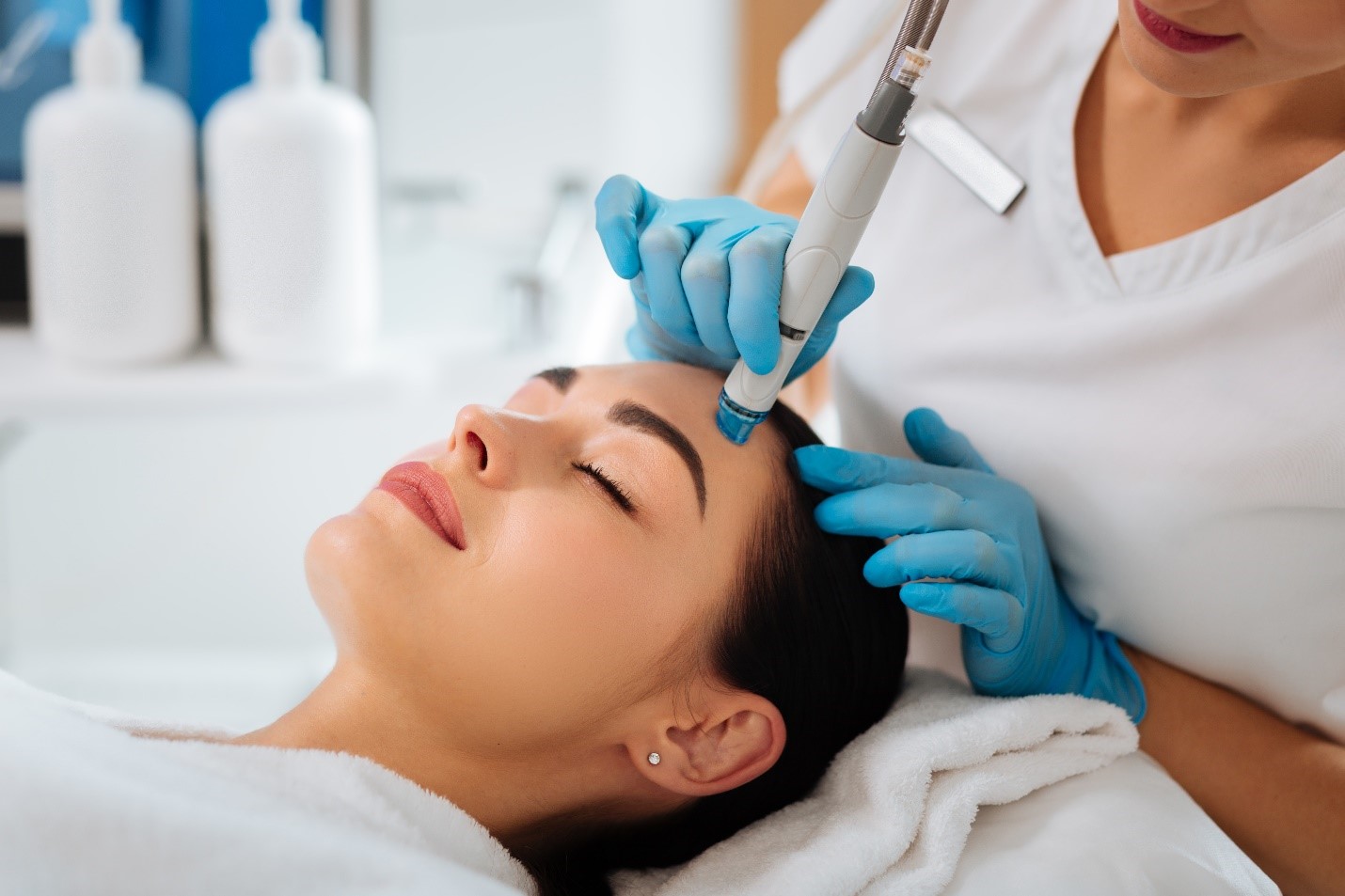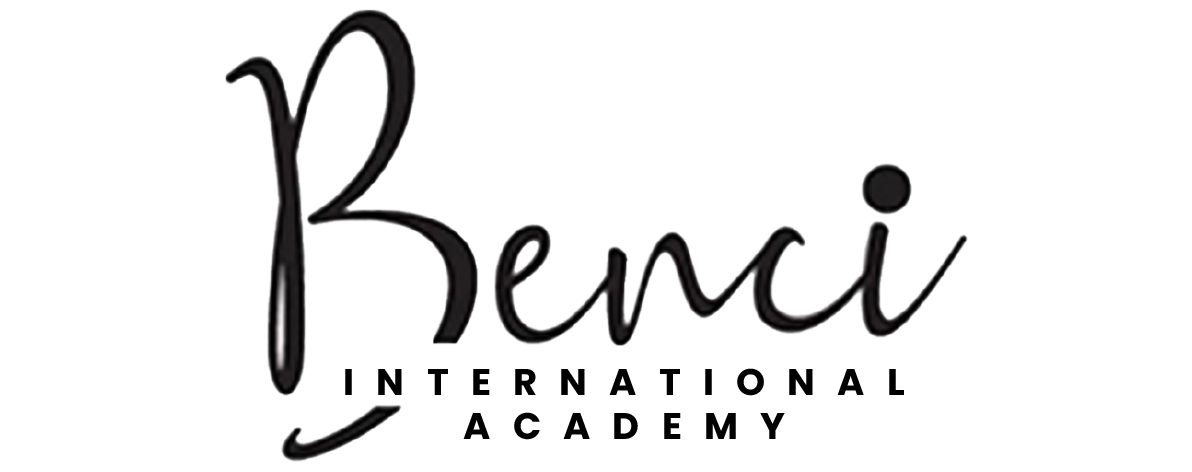Advanced Aesthetics Workshop
Welcome to the Advanced Aesthetics Workshop! Over the course of five days, you will delve into the intricacies of skin care, mastering advanced techniques and procedures to enhance beauty and address various skin concerns. Below is an overview of each day’s agenda, accompanied by frequently asked questions (FAQs) to guide you through the learning process. cosmetic brands, exhaustive theoretical know-how and, ample practice to make you ready to start your journey.
Main Objective of our courses
- To provide quality training to those seeking a career in the Beauty Industry.
- To introduce the culture of a safe, clean, healthy, and, pleasant environment at training centers and workplaces; related to beauty salons.
- To enhance the economic opportunities for our graduates.
- To provide improved services to the ever-increasing beauty cliental.
- To develop an understanding of the basic to advanced level principles, properties,s and application of various cosmetics and their effect on the skin.
- To impart basic knowledge of professional ethics and attitude.
Why Choose Us?
- Carefully designed Curriculum to make you a sound & seasoned Beauty Professional.
- In depth knowledge of core knowledge, theoretical concepts.
- Ample practical’s to make you ready to kick start your career by the end of the course.
- Live client handling practice & case studies.
- Knowledge of multiple brands both indigenous and international.
- Taught by experienced and internationally qualified educators.
- 360 degree grooming about the industry standards, professional ethics.
- Curriculums and trainings as per International Industry Standards.
- Domestic & International Placement assistance.
- Lifetime membership with Benci for continuous learnings.
Day 1: Skin Basics and Hydrafacial
Skin Structure: Understanding the layers of the skin is crucial for effective treatment. The skin comprises three main layers: the epidermis, dermis, and subcutaneous tissue. Each layer has its own functions and characteristics, which influence the choice of treatment.
Skin Function: The skin serves as a protective barrier against external threats such as pathogens and UV radiation. Additionally, it regulates body temperature, synthesizes vitamin D, and provides sensory perception.
Skin Physiology: The physiology of the skin involves complex processes such as cell turnover, sebum production, and melanin synthesis. These processes play a vital role in maintaining skin health and appearance.
Skin Analysis: Before administering any treatment, a thorough skin analysis is essential. This involves assessing the skin type, identifying any existing conditions or concerns, and determining the appropriate course of action.
Lymphatic Drainage Points: Understanding the lymphatic drainage points on the face and body is crucial for promoting detoxification and reducing inflammation. Proper lymphatic drainage techniques can enhance the effectiveness of aesthetic treatments.
Client Consultation Form: A comprehensive consultation form helps gather essential information about the client’s medical history, skincare routine, and treatment goals. This allows practitioners to tailor treatments according to the client’s needs and ensure safety and efficacy.
Tray Preparation: Proper tray preparation is essential for maintaining a sterile and organized workspace during aesthetic procedures. This includes arranging all necessary tools, equipment, and products in a systematic manner to streamline the treatment process.
Hydrafacial: Hydrafacial is a non-invasive skincare treatment that combines cleansing, exfoliation, extraction, hydration, and antioxidant protection. It helps improve the appearance of fine lines, wrinkles, hyperpigmentation, and congested pores, leaving the skin refreshed and revitalized.
Microdermabrasion (Face): Microdermabrasion is a mechanical exfoliation technique that uses a diamond-tipped wand or crystals to remove dead skin cells and stimulate collagen production. It helps improve skin texture, tone, and clarity, making it an effective treatment for acne scars, fine lines, and sun damage.


Day 2: Microneedling
Microneedling: Microneedling, also known as collagen induction therapy, uses fine needles to create controlled micro-injuries in the skin. This stimulates the body’s natural healing response, leading to increased collagen and elastin production. Microneedling helps improve skin texture, reduce scarring, and enhance the penetration of topical skincare products.
Day 3: Peel, Moles, and Warts
AHA Peels: Alpha hydroxy acid (AHA) peels exfoliate the outer layer of the skin, revealing smoother, brighter skin underneath. AHAs such as glycolic acid and lactic acid are effective in treating acne, hyperpigmentation, and sun damage.
BHA Peels: Beta hydroxy acid (BHA) peels, typically containing salicylic acid, penetrate deep into the pores to unclog and exfoliate the skin. BHA peels are beneficial for treating acne, blackheads, and oily skin conditions.
Removal of Moles, Warts, and Tags: Various methods, including cryotherapy, electrocautery, and surgical excision, can be used to safely remove moles, warts, and skin tags. Proper technique and post-treatment care are essential to minimize scarring and ensure optimal results.


Day 4: Laser Introduction and Laser Hair Reduction
Basics of Lasers: Laser technology utilizes concentrated beams of light to target specific skin concerns, such as hair removal, pigmentation, and vascular lesions. Understanding the principles of laser physics and the different types of lasers is essential for safe and effective treatment.
Laser Hair Reduction (LHR): Laser hair reduction uses laser energy to target and destroy hair follicles, leading to permanent hair reduction. It is a popular treatment for unwanted hair on the face, legs, underarms, and bikini area, offering long-lasting results with minimal discomfort.
Day 5: Carbon Peel/Black Doll Facial and Tattoo Removal
Carbon Peel/Black Doll Facial: Carbon peel, also known as the Black Doll Facial, involves applying a layer of liquid carbon to the skin, which penetrates deep into the pores. A laser is then used to heat and vaporize the carbon, along with any impurities and dead skin cells, leaving the skin smoother, tighter, and more radiant. This treatment is effective for reducing pore size, controlling oil production, and improving overall skin texture.
Tattoo Removal: Tattoo removal techniques include laser therapy, which breaks down the ink particles in the skin, allowing the body’s immune system to gradually eliminate them. Multiple sessions are usually required to achieve complete tattoo removal, with factors such as tattoo size, ink color, and skin type influencing the treatment process. Proper aftercare is essential to minimize the risk of scarring and ensure optimal results.
Additional Topics Covered:
- Vampire Facial/Plasma Lifting: This innovative treatment involves using the patient’s own stimulate collagen production and rejuvenate the skin. It is effective for reducing fine lines, wrinkles, and acne scars, as well as improving overall skin tone and texture.
- Ice & Fire Facial: The Ice & Fire Facial combines the benefits of cryotherapy (cold therapy) and thermotherapy (heat therapy) to tighten pores, improve circulation, and promote collagen production. This dual-action treatment results in smoother, firmer, and more radiant skin.
- Hair Regrowth Treatment: Various treatments, such as low-level laser therapy (LLLT) can help stimulate hair growth and prevent hair loss. These treatments work by promoting blood circulation, stimulating hair follicles, and prolonging the hair growth cycle.
- Radiofrequency (RF) and Skin Tightening: RF technology delivers controlled heat energy deep into the skin, stimulating collagen production and tightening lax skin. RF treatments are effective for reducing wrinkles, fine lines, and sagging skin on the face and body.
- Skin Tightening and Removal of Moles, Warts, and Tags: Non-invasive skin tightening treatments, such as radiofrequency (RF) and ultrasound therapy, can improve skin laxity and firmness. Additionally, various methods, including cryotherapy, electrocautery, and surgical excision, can be used to safely remove moles, warts, and skin tags.
Throughout the workshop, lectures, demonstrations, and hands-on sessions provide participants with comprehensive knowledge and practical skills in advanced aesthetics, ensuring they are well-equipped to deliver safe, effective, and personalized treatments to their clients.



